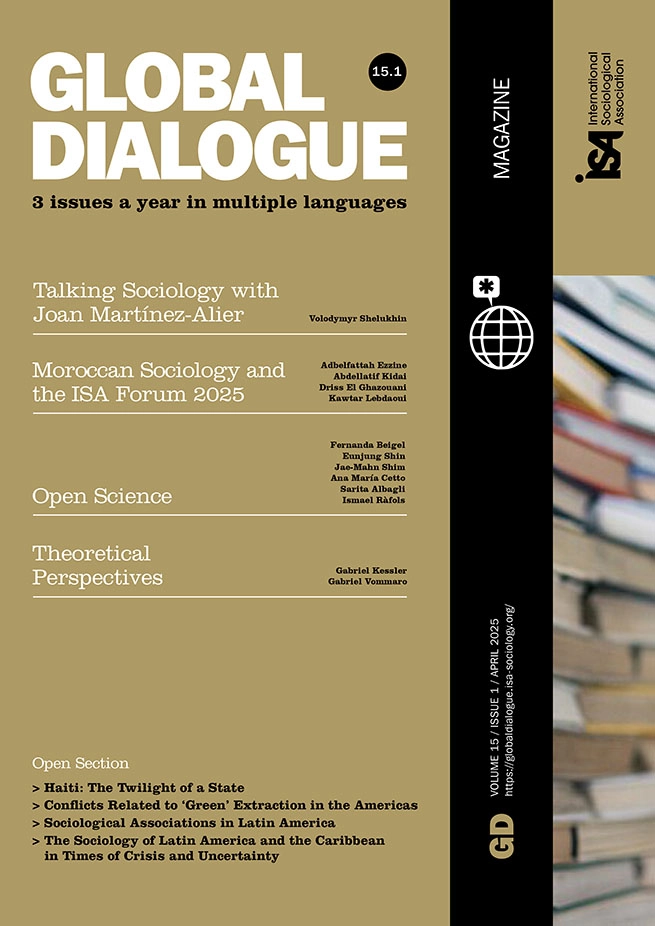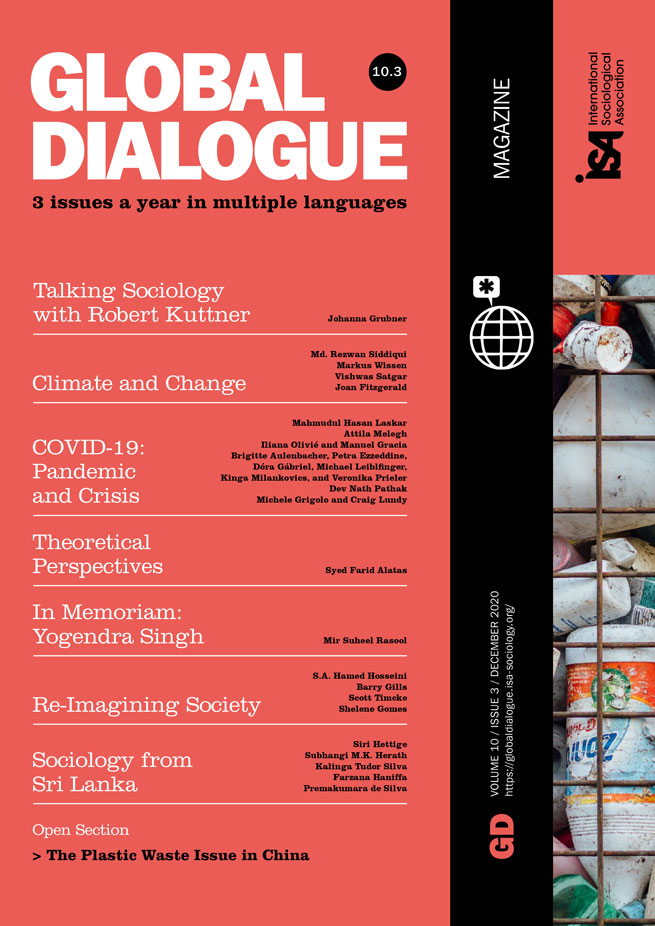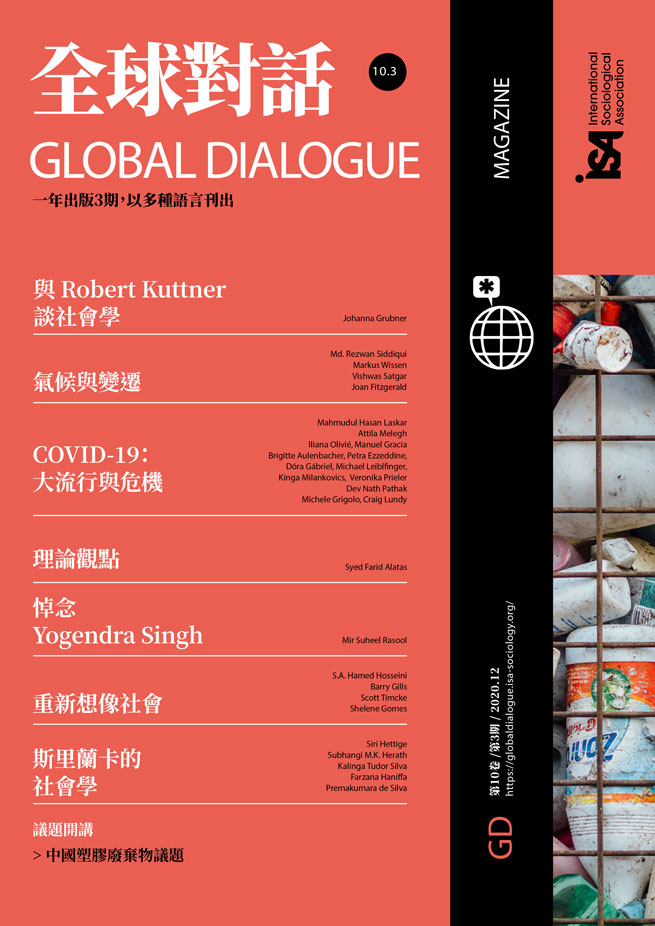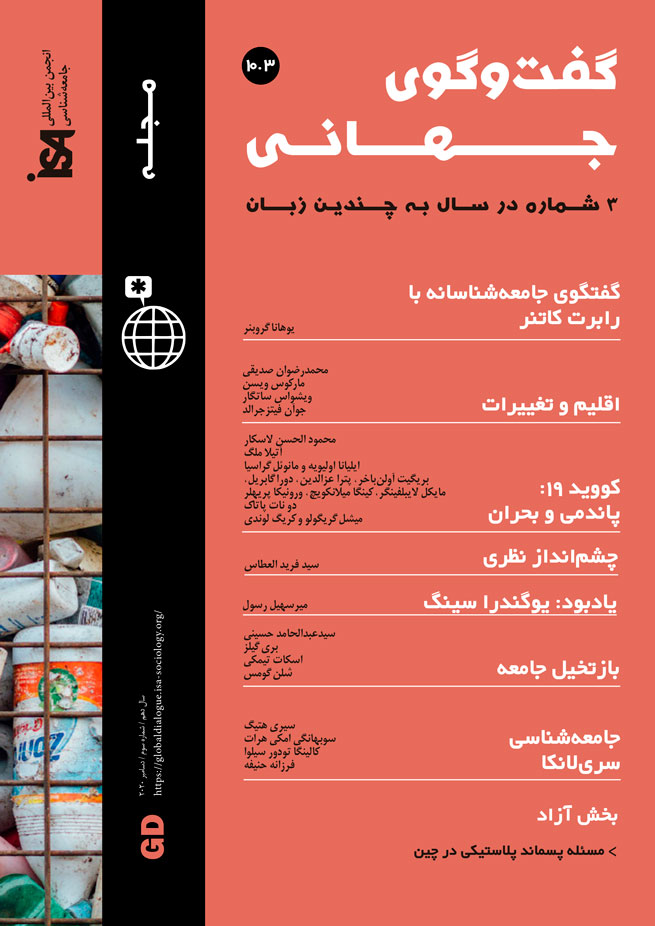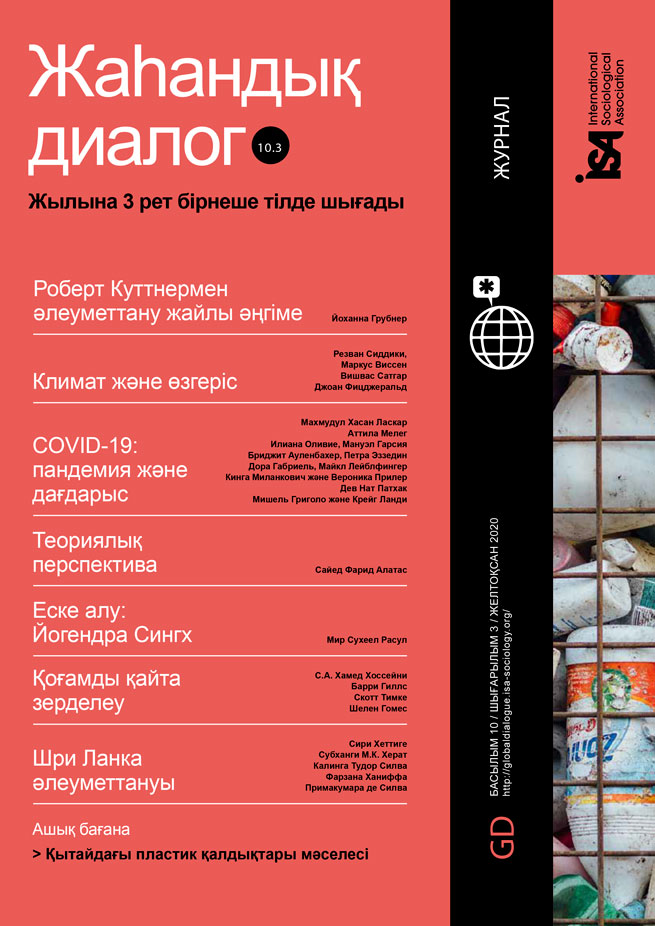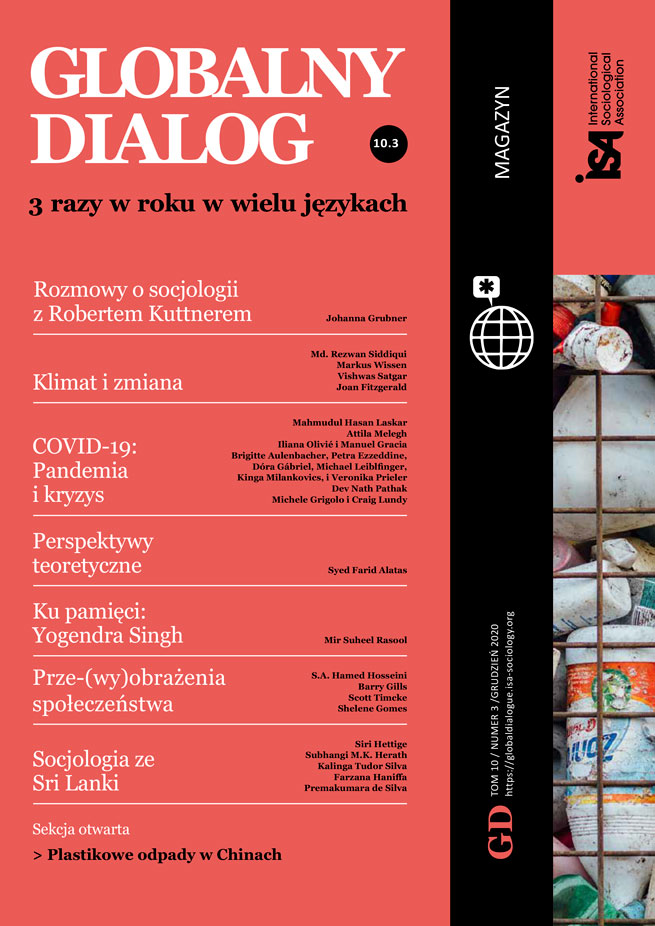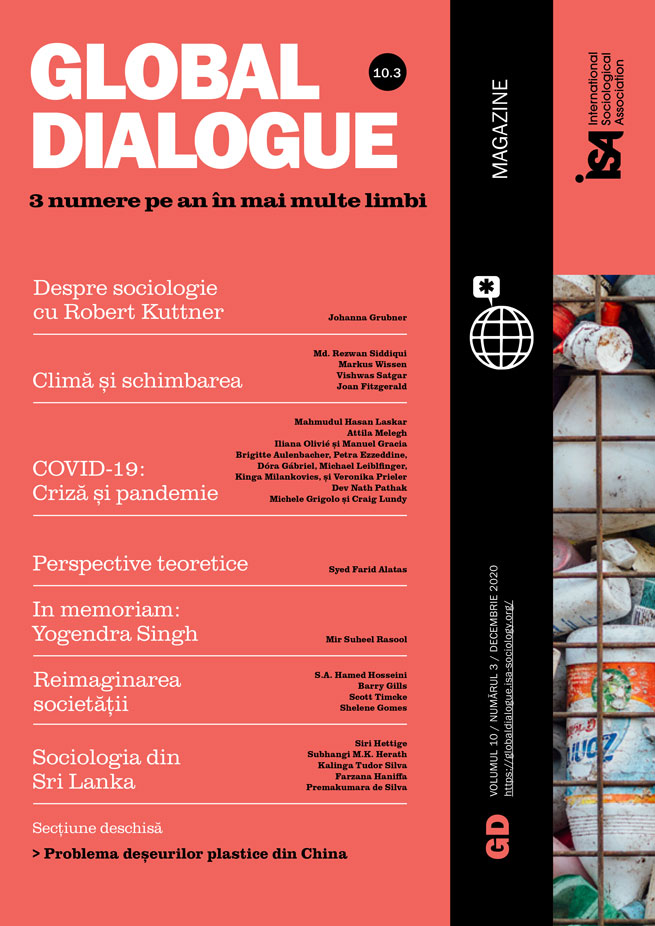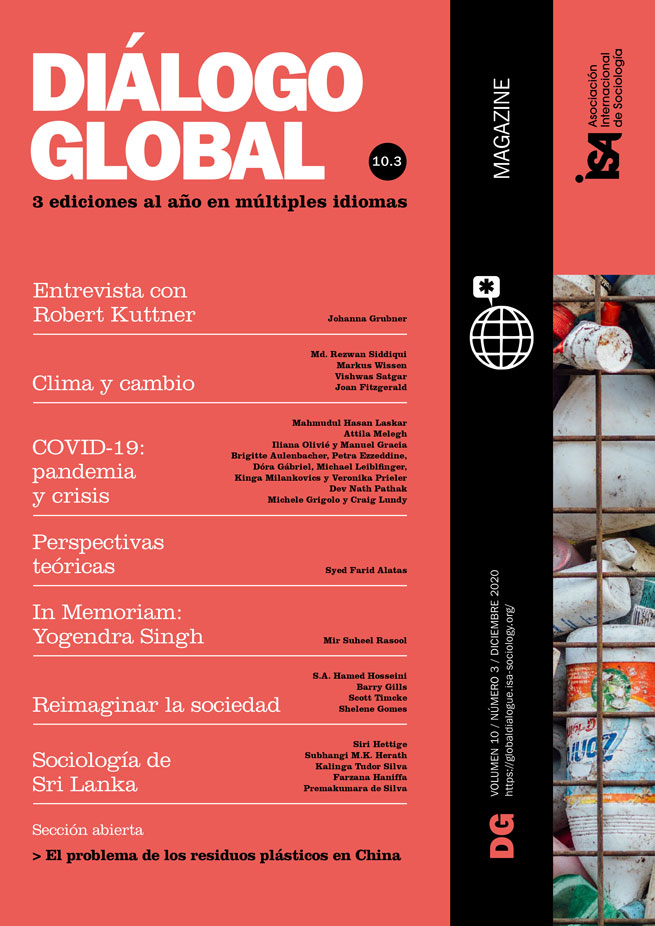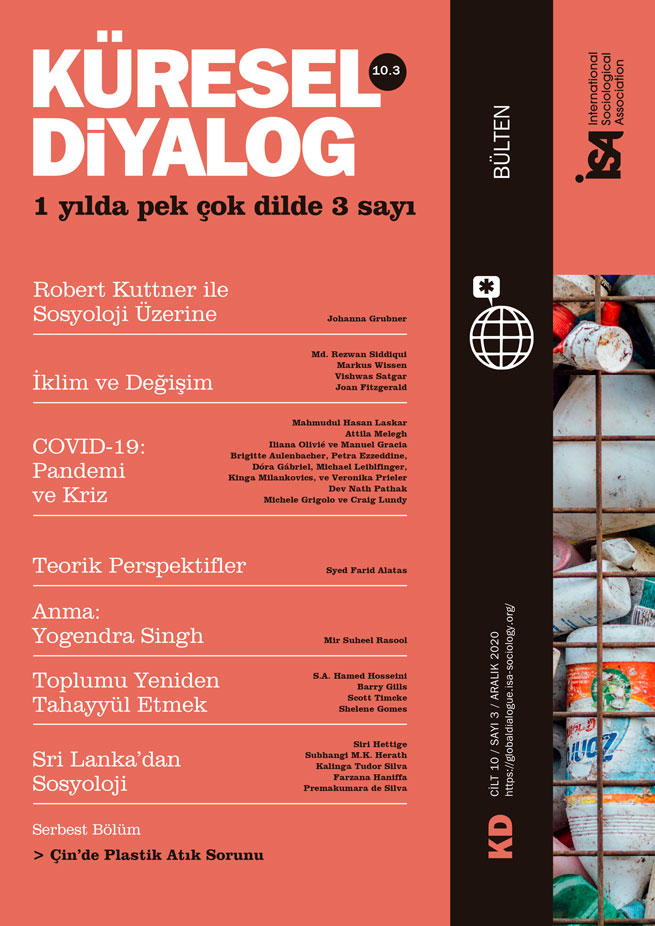Social Distancing: The Relevance of Sociology

October 29, 2020
The topic is an excuse to introduce the reader to sociology. However, as a reward for indulging me, I will eventually address the topic of social distancing, only to claim, however, that it is a misnomer. But we need to know what sociology is in order to understand that point.
What is sociology?
We may begin with the founder of this discipline, Abd al-Rahman Ibn Khaldun (AD 1332-1406), one of the most remarkable Muslim scholars of the pre-modern period. He founded an entirely new science that he called the science of human society (‘ilm al-ijtima‘ al-insani). This is today called sociology: the study of society. In the words of the great Hungarian-born German sociologist, Karl Mannheim (1893-1947), society itself refers to the different forms of the living together of humans. These forms, which include social contact, social distance, isolation, individualization, cooperation, competition, division of labor, and social integration, allow human beings to come together, live, and interact in various types of associations and groups that form communities and societies. It is important to understand the nature of society and group life if we are to understand social behavior and events. Ibn Khaldun helps us understand this.
To show how it was necessary to know about the nature of society in order to distinguish between fact and fiction in history, Ibn Khaldun gave the example of discussions in historical works concerning the descent of the Moroccan ruler Idris bin Idris (AD 803-828) of the Idrisid dynasty. Gossipmongers had suggested that the younger Idris was the product of an adulterous relationship between his mother and Rashid, a client of the Idrisids. The fact, however, was that Idris’ father was married into the Berber tribes and lived among them in the desert. Ibn Khaldun’s sociological point was that the nature of desert life was such that it was not possible for such things as extra-marital affairs to happen without the entire community knowing about them. If we knew something about desert society, the way of life of desert nomads, and the ways in which they interact, that is, their social conditions, we would conclude that it was unlikely that Idris could have been born from an illicit relationship.
Sociology, therefore, is about understanding the nature of the social and how social factors play a role in the development of communities, societies and civilizations. With the aim to explain human interaction, co-operation and association, sociological ideas thus oftentimes moved out of academia. They were taken up and expanded on by politicians and influenced policy making in countries all over the world.
Rajaratnam and Ronald Reagan on Ibn Khaldun
The late S. Rajaratnam (1915-2006), foreign minister (1965-1980) and deputy prime minister (1980-1985) of Singapore used Ibn Khaldun’s ideas to reflect on the future of Singapore in the twenty-first century.
In a speech he gave in December 1979[1] he dealt with the question of how a society could acquire and harness virtu, understood in Machiavelli’s sense of virtuous qualities such as pride, bravery, skill, forcefulness, and ruthlessness that enabled one to master a situation. Virtu was needed by a society in order to deal with the economic, social, cultural, political, and technological forces that were plunging it into the future, in the face of which the failure to act would result in its decline. Rajaratnam was formulating his views during the days of the Iranian Revolution, which also made him reflect on the rise and decline of Islamic civilization. This led him to read Ibn Khaldun’s Al-Muqaddimah, his three-volume introduction to the history of the Arabs, Berbers, and other nations, upon the advice of his sociologist friend, Syed Hussein Alatas.
Rajaratnam noted that Ibn Khaldun’s key concept ‘asabiyya, the feeling of group solidarity, primarily among tribes, villages, and pioneer settlements, was what made nomadic society more resilient, tough, brave, and self-reliant in comparison with people who lived in cities. It was the binding ties of ‘asabiyya that enabled these nomads to conquer cities and form new dynasties. Rajaratnam’s insight led him to suggest that Ibn Khaldun’s ‘asabiyya was Machiavelli’s virtu.
About two years after Rajaratnam’s speech, a well-known quote from Ibn Khaldun was cited by US President Ronald Reagan: “It should be known that at the beginning of the dynasty, taxation yields a large revenue from small assessments. At the end of the dynasty, taxation yields a small revenue from large assessments. The reason for this is that when the dynasty follows the ways (sunan) of the religion, it imposes only such taxes as are stipulated by the religious law, such as charity taxes, the land tax, and the poll tax.”
President Reagan cited Ibn Khaldun as an early exponent of supply-side economic theory, the doctrine on which his administration based many of its policies, according to which a cut in tax rates would stimulate the economy, resulting in the generation of greater tax revenues. Citing Ibn Khaldun, Reagan said: “we’re trying to get down to the small assessments and the great revenues.”[2]
For Ibn Khaldun, the decline of ‘asabiyya coupled with the pursuit of luxury among the ruling class would result in higher rates of taxation. The problem arises over generations as the ruling elite develops a more sophisticated and luxurious lifestyle, which requires an increase in taxes and assessments. These finally reach levels that end up reducing or halting productive activities, which in turn decreases tax revenues, causing first a downturn in the production and fiscal cycles of the dynasty, and eventually its demise. This problem also concerned Rajaratnam. He believed that as Singapore entered the twenty-first century and had to “steer safely through fortuna - the capricious play of world forces,” what was needed was Machiavelli’s virtu or Ibn Khaldun’s ‘asabiyya.
Durkheim and the study of suicide
While psychology is the science of the mind and of the individual conscience, sociology studies the collective conscience as a social fact. The collective conscience encompasses the moral, religious, and cognitive beliefs and sentiments that are common to the average person and hold society together. Psychological explanations are directed to particular individuals, whereas sociological explanations aim to understand the causes for an entire group based on group characteristics. Émile Durkheim (1858-1917), one of the founders of the modern discipline of sociology, and one concerned with establishing sociology as a distinct discipline, used the study of suicide to show how sociology differed from psychology.
Durkheim studied suicide not just for the sake of studying an important social phenomenon but also to demonstrate to the scholarly community that sociology could play a role in explaining what seemed to be an individual act for which psychological explanations were sufficient.
Durkheim wanted to explain differences in suicide rates across groups. Assuming that biological and psychological factors remained constant from one group to another, differences in suicide rates between groups would likely be due to variations in sociological factors rather than biological and psychological factors. He empirically tested his theory by first ruling out other factors. For example, he ruled out race as a factor because there were different rates of suicide among groups within the same race.
The particular social facts Durkheim used to explain different rates of suicide among different peoples are the degree of integration and the degree of regulation in a society or group. Differences in the degree of integration and regulation can result in one of four types of suicide: egoistic suicide, altruistic suicide, anomic suicide, and fatalistic suicide.
Let us consider the example of two of these types of suicide. Egoistic suicide occurs because an individual is not well integrated into the group. If collective conscience is weak and people are left to pursue private interests in whatever way they wish, this unrestrained egoism can lead to personal dissatisfaction. Not all needs can be satisfied, and even those which can will lead to more needs and, ultimately, to dissatisfaction and, for some, to suicide. However, if the individual lives in a strongly integrated group such as a family or religious group, these provide a strong collective conscience and discourage suicide.
Altruistic suicide occurs when social integration is too strong. One famous example is the mass suicide of Reverend Jim Jones’ followers in Jonestown, Guyana, in 1978. The followers of the Reverend willingly drank poison for his sake and gave it to their children as well. They were persuaded or forced into committing suicide by virtue of being part of the tightly integrated society of followers and believing it was their duty to do so.
As we have seen, sociology is about the social: the interaction, cooperation, and association among human beings, and how social factors play a role in their development. What does this tell us about social distancing?
Is it really social distancing?
We started to hear the term “social distancing” during the current coronavirus pandemic. According to the World Health Organization, to practice distancing means to “[m]aintain at least 1 meter (3 feet) distance between yourself and others.” Many refer to this as social distancing, that is, the practice of maintaining physical space between people outside of the home, not gathering in crowds, and avoiding mass gatherings.
What is meant by social distancing is actually physical distancing. Indeed, many definitions of social distancing state that it is also known as physical distancing. This gives the wrong impression that the social and physical somehow refer to the same thing.
Social distance is a very important concept in sociology. As a term in public health it is relatively new, but in sociology it can be traced back to the pre-World War II period. It does not mean the same thing as physical or spatial distance, although this does not imply that social and physical distance may not coincide.
Social distance refers to the lack of social contact, regardless of physical distance or proximity. Social contact itself may be primary, characterized by frequent and more intimate associations, which may or may not involve face-to-face, unmediated visual and auditory engagements with people in our primary group such as family members, colleagues, and friends. Or social contact may be secondary, involving less frequent and less intimate associations with people who are not in our group. In any case, social contact is about social proximity and social relations between individuals, regardless of the degree of physical proximity.
Two people may be physically distant but socially proximate or intimate, that is, having social contact. When a couple, separated by national borders due to the travel restrictions imposed to halt the spread of the coronavirus, meet each other via social media they are not practicing social distancing. They have intimate social contact, despite the physical distance.
On the other hand, it is possible to be physically close without having social contact. In this case, physical proximity coexists with social distance. Take, for example, two people crossing the road at a zebra crossing. They are strangers to each other even though they may be physically close. Their actions or behavior are not oriented towards each other and there is no social contact between them. Another example would be purchasing an item in the grocery store. There is physical proximity but the social contact is limited to a short monetary transaction.
In this pandemic period, we need to encourage and enforce physical, not social distancing. It is the physical distancing that is needed to limit the spread of the coronavirus. It is precisely because of the physical distancing and the lack of possibilities for physically proximate socializing that we need to encourage other forms of social contact, not social distancing.
It is time to think and talk clearly about what we mean. We should be thinking about physical distancing and social contact and how we can enhance social proximity even as we maintain physical separation from each other.
[1] “Raja takes a look at the past and the future,” The Straits Times, December 21, 1979.
[2] Robert D. McFadden, “Reagan cites Islamic scholar,” The New York Times, October 2, 1981.
Syed Farid Alatas, National University of Singapore <alatas@nus.edu.sg>
